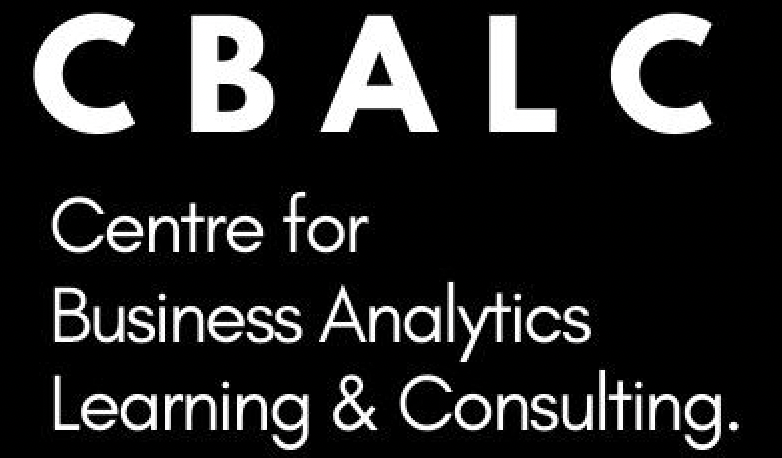While several industries are still struggling to overcome the post-pandemic effects, there are a few industries, like supply chain, that took the opportunity to adopt these modern technologies at a large scale.
With the potential to revolutionize processes, decision-making, and overall efficiency, AI is one of the top advanced technologies that businesses must utilize to stay ahead of the curve. Data from Statista shows that AI for the supply chain solution market has resulted in better inventory management, smart manufacturing, dynamic logistic systems, and real-time delivery controls, which has led to its wide scale adoption.
The main objective of using AI in supply chain and logistics is to increase efficiency and productivity. This introduction of AI in supply chain management has led to more sustainability, making every enterprise wonder if digital transformation can benefit their supply chain business.
A recent study conducted by McKinsey says that implementing AI in logistics and supply chain management has led to significant improvements. This demonstrates the potential of AI-enabled supply-chain management to revolutionize the industry and its importance in the modern business landscape. This blog will help you understand what AI and data analytics in the supply chain can do for your business.
So, let us move ahead and look at how AI for the supply chain impacts businesses. In addition to this, we will also look at how integrating AI development services for your enterprise will bring the workforce, machines, and software into action.
Understanding the Role of Data Analytics in Supply Chain Management with Examples
Using AI and data analytics for the supply chain using advanced algorithms and machine learning techniques, businesses can extract valuable insights that help in making informed decisions. Enterprises that use supply chain data analytics solutions can aim to make the supply chain business more:
- Instrumented – machine-generated data flowing out of IoT devices.
- Intelligent – more accurate and competent assumptions with the help of data analytics and modelling.
- Interconnected – extensive connectivity for better decision-making.
The supply chain data analytics solutions help optimize the workflow where large amounts of data can provide forecasting, identify inefficiencies and drive innovation. Here are some of the top supply chain data analytics examples that you can follow to make insightful data-driven decisions for your supply chain business.
- Predictive Analytics
Predictive analytics is a technique that leverages the power of statistical modeling and regression analysis to identify and understand trends from historical data in order to make predictions about future trends.
This helps supply chain companies predict the most likely future outcome and its business implications. For instance, using predictive analytics to mitigate risks and disruptions.
- Descriptive Analytics
Descriptive analytics is a form of data mining that involves the analysis of large datasets to identify patterns and generate summaries that allow users to gain insight into a given situation. This type of analytics utilizes historical data to uncover trends and draw conclusions that can be used to inform decision-making.
Descriptive analytics is another example that can help you understand the importance of data analytics in the supply chain. This helps provide visibility and certainty to all kinds of internal and external data across the supply chain management.
- Prescriptive Analytics
Prescriptive analytics is a powerful tool for supply chain operations, allowing for the exploration of how specific changes will affect outcomes. Through this, potential improvements can be identified and recommended, providing a valuable resource for optimizing supply chain operations.
This includes collaborating with logistic partners to reduce time and effort for maximum business value. One popular reference is the use of SRM (Supplier relationship management) as a prescriptive analytic approach.
- Cognitive Analytics
If you wish to understand advanced analytics in supply chain management, cognitive analytics is the way to go. This is best used in enhancing customer experience and relationships. The feedback data received through AI-driven systems is analyzed and executed in reports and dashboards to answer complex questions.
This application of AI in the supply chain can automatically allow your business to pursue breakthrough ideas and provide better customer needs and demands. If you still haven’t decided on embracing the use of analytics in the supply chain for your business, our next point of discussion is for you.
Key Steps to Optimize AI and Data Analytics in the Supply Chain
Depending on each organization’s unique needs, available resources, and industrial environment, the implementation journey for AI/ML in the supply chain may differ. However, here are some of the common steps that a supply chain AI solutions provider would follow to successfully implement AI in the supply chain.
Establish Goals
A reputed AI development company like Appinventiv first begins with establishing the goals you hope to accomplish by integrating data analytics and AI in the supply chain. The AI/ML experts, after discussion with the stakeholder, determine which particular fields, such as demand forecasting, inventory optimization, route optimization, or risk management, AI can be utilized in.
Collect and Organize Data
Next, the experts gather pertinent information from various sources throughout your supply chain, such as previous sales data, customer information, inventory records, logistical information, and external data sources, such as market trends and weather patterns, and organize them.
Data Preparation and Cleaning
Raw data frequently has errors, inconsistencies, or missing values. The data must be cleansed and prepared before AI algorithms can examine it efficiently. This entails activities including eliminating duplicates, fixing mistakes, addressing missing data, and formatting the data appropriately.
AI Algorithm Selection
In this stage, the experts choose the right AI algorithms to address certain supply chain challenges based on the outlined objectives. Regression, classification, clustering, or deep learning methods for complicated pattern identification may be used in this case.
Choose AI Technologies
In this stage, the supply chain data analytics software development experts would help you to choose the AI tools and methods compatible with your goals and available data. This could involve identifying the right AI technologies like robotic process automation, computer vision, natural language processing, machine learning, or predictive analytics.
Data Modelling
Data modelling is a crucial process that requires the careful selection of the right set of machine learning algorithms. Our team of data scientists experiments with various data sources by transforming them and constructing features that can best explain the variability in the data. This means that your organization can leverage the power of algorithms such as Seq-Seq and Auto-Encoders to generate forecasts.
However, it is important to note that all AI algorithms are based on specific mathematical assumptions. Therefore, it is crucial to prepare the data in a certain way to cater to these assumptions.
Integrate with Existing Systems
Now, the experts would integrate AI capabilities into the infrastructure and technologies that now run your supply chain. In order to do this, enterprise resource planning (ERP), warehouse management (WMS), transportation management (TMS), or other pertinent software may need to be linked with AI models. The experts would ensure that the systems’ integration is seamless and permits data transfer.
Test and Validate
In this stage, the experts put your AI models and linked systems through thorough testing and validation. By contrasting forecasts or suggestions with actual results, you may confirm the precision, dependability, and performance of the AI algorithms. Depending on the testing outcomes, the QA experts iterate and improve the models.
Pilot Testing and Deployment
It is highly recommended to conduct pilot testing and deployment on a smaller scale before implementing AI solutions across the entire supply chain. This approach allows for effective evaluation of the AI system, identification of any issues or areas of improvement, and fine-tuning of the algorithms.
By doing so, AI/ML experts ensure the success of your AI for the supply chain optimization and implementation. They take the necessary steps to pilot-test your AI for the supply chain solution and reap the benefits of a streamlined supply chain.
Continuous Improvement
Supply chain AI implementation is a continuous process. Evaluate how AI is changing your supply chain processes over time and make necessary changes in your AI-based supply chain management to increase productivity, accuracy, and decision-making. Keep abreast of current AI breakthroughs and look at supply chain innovation and optimization prospects.
– Harshit Sirohi







